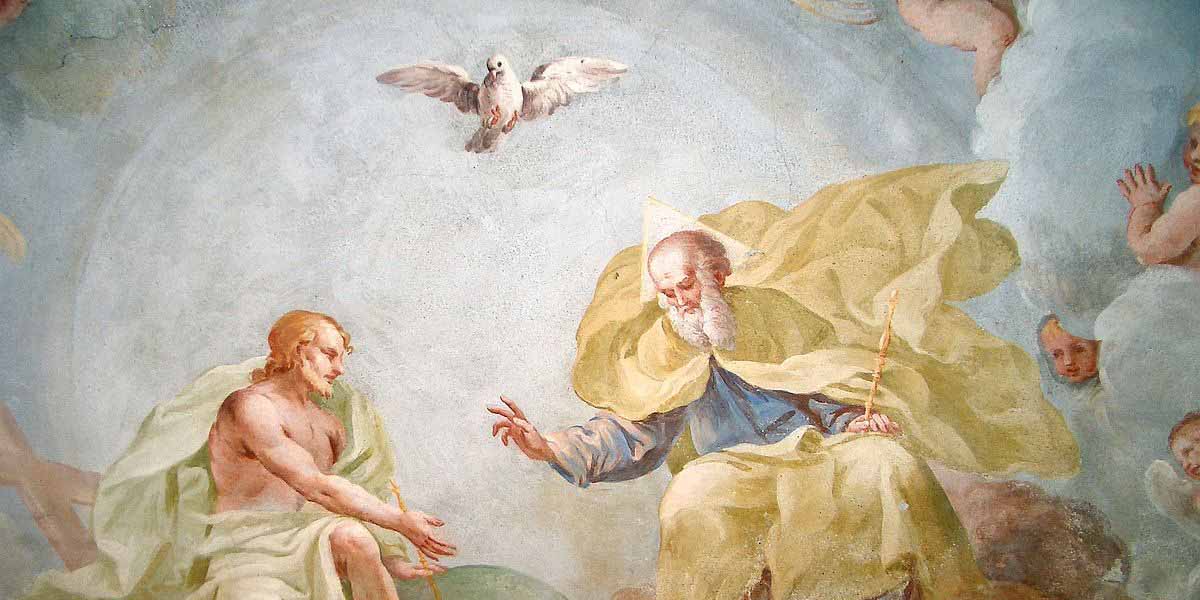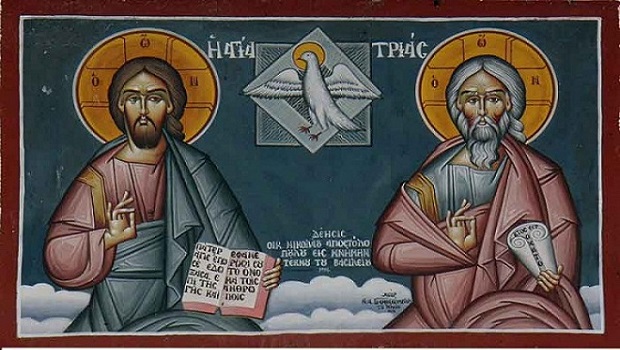The Trinity: Lover, Beloved, and the Love between them.
SOLEMNITY OF THE MOST HOLY TRINITY (C)
click here for readings
There is perhaps no doctrine as essential to the Christian religion than the Holy Trinity. The belief in one God in three Persons makes Christianity unique in all the world. In the words of the Athanasian Creed:
Now the Catholic faith is that we worship One God in Trinity and Trinity in Unity, neither confounding the Persons nor dividing the substance. For there is one Person of the Father, another of the Son, another of the Holy Spirit. But the Godhead of the Father, of the Son, and of the Holy Spirit, is One, the Glory equal, the Majesty coeternal.
If you don’t quite grasp that on first reading, don’t feel bad. The Trinity is, fundamentally, a mystery. It is something beyond our reason, beyond our ability to comprehend. The Trinity involves the very essence of God, and to comprehend that, you’d have to be greater than God Himself.
But just because it is a mystery does not mean we shouldn’t spend time thinking about the Trinity. Rather it means we can spend our entire lives thinking about it and never come to the end of it. This is, in fact, the Christian vocation — to spend all eternity pondering the great mystery of the Holy Trinity.
During the first several centuries of the Church, nearly all of the great heresies were Trinitarian. They all involved some error about how Christ or the Holy Spirit were related to God the Father. Is Jesus really God? Is the Holy Spirit really God? In each case, the Church held fast to the faith in one God existing as three Persons. These three Persons share all things in common — even the very same being — differing only in their relationship to one another.
This idea of God having relationship within His being makes the doctrine of the Trinity so vital to our lives as Christians. We are made in the image of God, which means there is something Trinitarian about us, as well. No, we don’t exist as three persons in one being. But we are made to be in relationship. As John Donne said, “No man is an island.” This is why Christ commands us to love God and our neighbors (Mk 12:31), and why He teaches that we will be judged according to how we treat our neighbors (Mt 25:31-46). We are made for community. We are made for communion.
The human relationship par excellence is marriage. This is why God’s relationship to the Church is described in terms of a marriage (Eph 5:32). And this is why the Church takes Christ’s teachings about marriage so seriously. In his recent exhortation Amoris Laetitia (the Joy of Love), Pope Francis writes:
Marriage is the icon of God’s love for us. Indeed, God is also communion: the three Persons of the Father, the Son and the Holy Spirit live eternally in perfect unity. And this is precisely the mystery of marriage: God makes of the two spouses one single existence… This has concrete daily consequence, because the spouses… can make visible the love which Christ loves His Church and continues to give His life for her (AL 121).
Being made in the image of God means that we are made to be in relationship. The fact that God has within Himself relationship, while being a mystery above our reason, nevertheless is compatible with reason. God, after all, is love (1 Jn 4:8). And love requires both a lover and a beloved. Love requires relationship. You and I must look outside of ourselves for this; but God, perfect in every way, has this within His very being. This is why instead of saying “God is loving,” we say “God is love.” God the Father, the Son and the Holy Spirit is both the Lover and Beloved and the Love between them.
When we Christians worship the Trinity, we are worshiping Love. When we defend the doctrine of the Trinity, we defend Love. When we meditate on the Trinity, we learn the ways of Love. And insofar as we love, we become like God. Because “the love of God has been poured into our hearts, through the Holy Spirit that has been given to us” (Rom 5:5).



